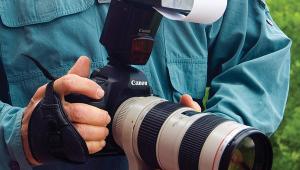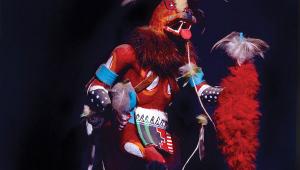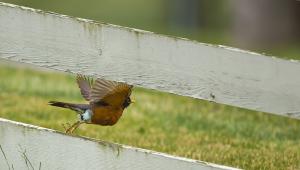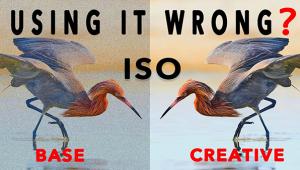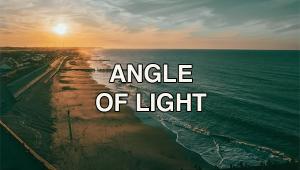Pictures as Pork Chops
![]()
Pictures as Pork Chops
by George Schaub
The head for this column comes from a statement by Bob Schwalberg, the irascible senior editor of Pop Photo from back in the eighties who, when describing the state of affairs for pros selling stock, told me, "Pictures are not pork chops to be sold by the pound." He was not deriding photographers for selling their images, or paying the rent with their camera, but the way in which pictures, and photographers, were being treated by buyers. He was saying that images were created with heart and soul, yet once they landed in the market that they, and the photographers who created them, were treated as just one more commodity. Judging from the state of stock sales today good old Schwalberg must be spinning in his grave.
Part of the reason for the "commoditization" of images, of course, is the proliferation of digital capture devices and the worldwide, instantaneous distribution of same. CNN calls for pictures from "citizen photojournalists." No moment seems to be un-photographed, from surveillance cameras that blanket our cities to folks with cell phones recording career-ending screeds by comics. Google Earth stalks our side streets and catches us watering our plants in our living room windows, or worse, and eyewitness accounts are made credible, or disproved, by the omnipresent camphone. Web sites abound where you can post images of everything and everywhere, with your own personal blog to boot. Want to stay in a modest hotel in Parma? You'll find a full critique from a one night stand tourist with a host of images displaying everything from the state of the toilet to the breakfast buffet. We even got a call at the magazine recently from a weather web site that wanted us to inform you all that pictures of bad weather were welcome for upload.
It may seem odd for an editor of a photo magazine to call this image overload into question. But it's not the accessibility to images or those who create them that set me off. In fact, it was an article in the New York Times, written this summer by Katie Hafner and entitled "It'll Be Photographer's Choice on a Web Site by Corbis." In it, Ms Hafner discusses SnapVillage, a Corbis "microstock" agency as being the latest in "crowd sourcing" sites for images. It's where "thousands of amateur and semiprofessional photographers submit images and charge as little as $1 for them." Yes, you can set your own price (for up to $50 a shot, says the article) but the article also states "the low micropayment prices could takes business from sellers of higher-price images..."
No kidding. But that's not what got my goat. The article goes on to quote Gary Shenk, president of Corbis, as saying, "Cannibalization is going to happen in our industry. We can either let it consume us or be part of it."
While I let that sink in I'll say that there are a number of sites and agencies that still service the lion's share of the business and still get good fees for images, and photographers, Corbis among them. And it's great that all photographers now have an outlet for their images, from news to weather to blogs about recent jaunts. But the undermining of the value of images, the treatment of pictures as pork chops, creates a glut that will invoke the law of supply and demand with a vengeance.
Yes, it's great to show your images for all to see. And yes, if it makes you happy, then submit away. But as our own Steve Bedell has often pointed out, when everybody with a digital camera starts making pictures at a wedding then there will be little need in the future for wedding photographers. You could make the same case about photojournalists, sports photographers, editorial photographers and, perhaps the most endangered of all, stock photographers. There will always be a need for quality images in some quarters, and commercial photographers might be the least threatened by all this. But those who pay their rent day in, day out with a camera might want to take note, if they haven't felt the pinch already.
New technology and new methods of distribution have already blurred many lines
between what constitutes a professional and an avid and active amateur photographer.
That's all well and good and makes pros even more aware that they have
to have their act together, and might just give those aspiring to pro status
(that is, making a living from their images) a chance to make a go of it. But
when one of the top stock agencies tells us that we should start acting like
cannibals of our own work then we might want to rethink the whole "pictures
as pork chops" mentality and begin to approach the market, and how we
share our images with it, in a new way.
- Log in or register to post comments

